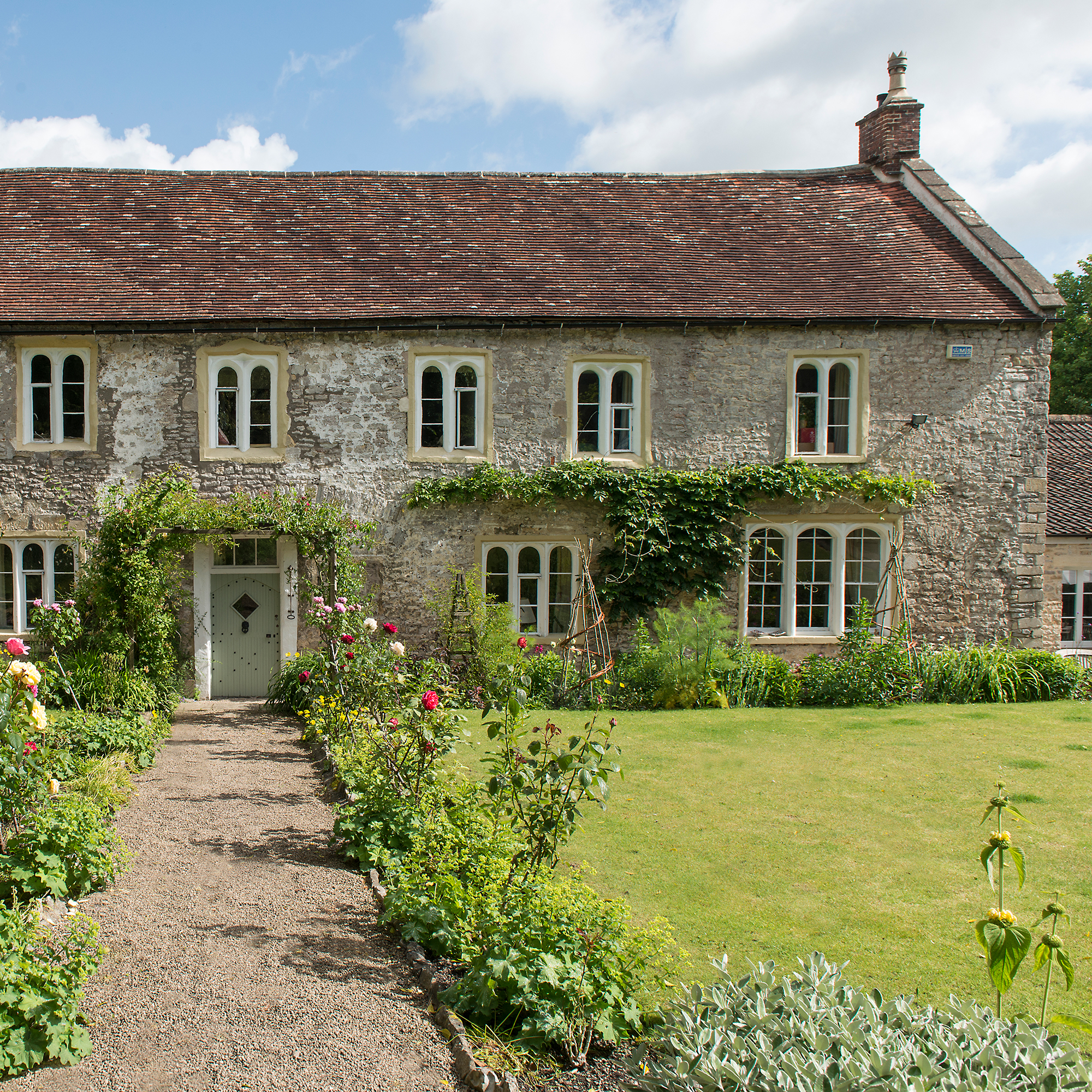
Lizzie and James Brittain moved into their rented Somerset home in 2005, expecting it to be temporary. James had changed careers, so the couple relocated, from London, with their two daughters. But they soon realised they had found their ideal home and a place to put down roots. Within a year, they bought the property from their landlord.
‘The house just worked for us,’ explains Lizzie. ‘It has a lot of character, and all of our furniture slotted in really well. We found the town very friendly – it all just felt right.’
The Grade II-listed house dates from the 16th century, possibly earlier. It was originally a barn before being converted to a knight’s dwelling, then later serving as a temporary rectory for the neighbouring church.
Once the house became theirs, Lizzie and James were keen to make a few changes.
Kitchen extension
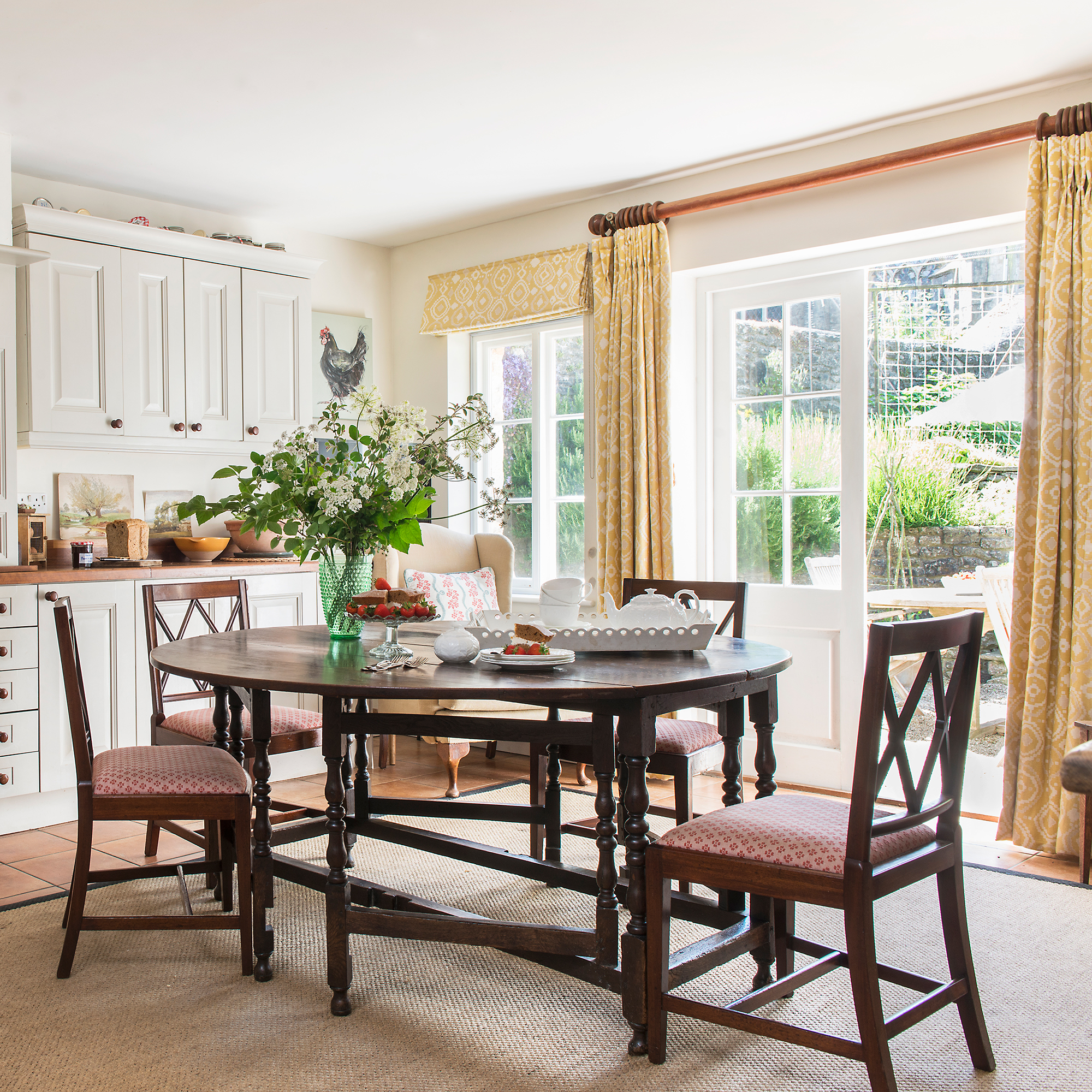
The property was in good condition when the family arrived, although its Grade II listed status prevented them from making any major alterations.
Their most ambitious project was to enlarge the small kitchen at the back of the house with a kitchen extension. The plan was to extend out by about two metres, necessitating the removal of a large, grass-covered mound.
‘It was a huge task to dig out, but we found it was mostly chunks of local grey Doulting limestone,’ says Lizzie. ‘We’ll always try to repurpose where we can, and as the stone was set aside, we could see there was enough to build the extension.’
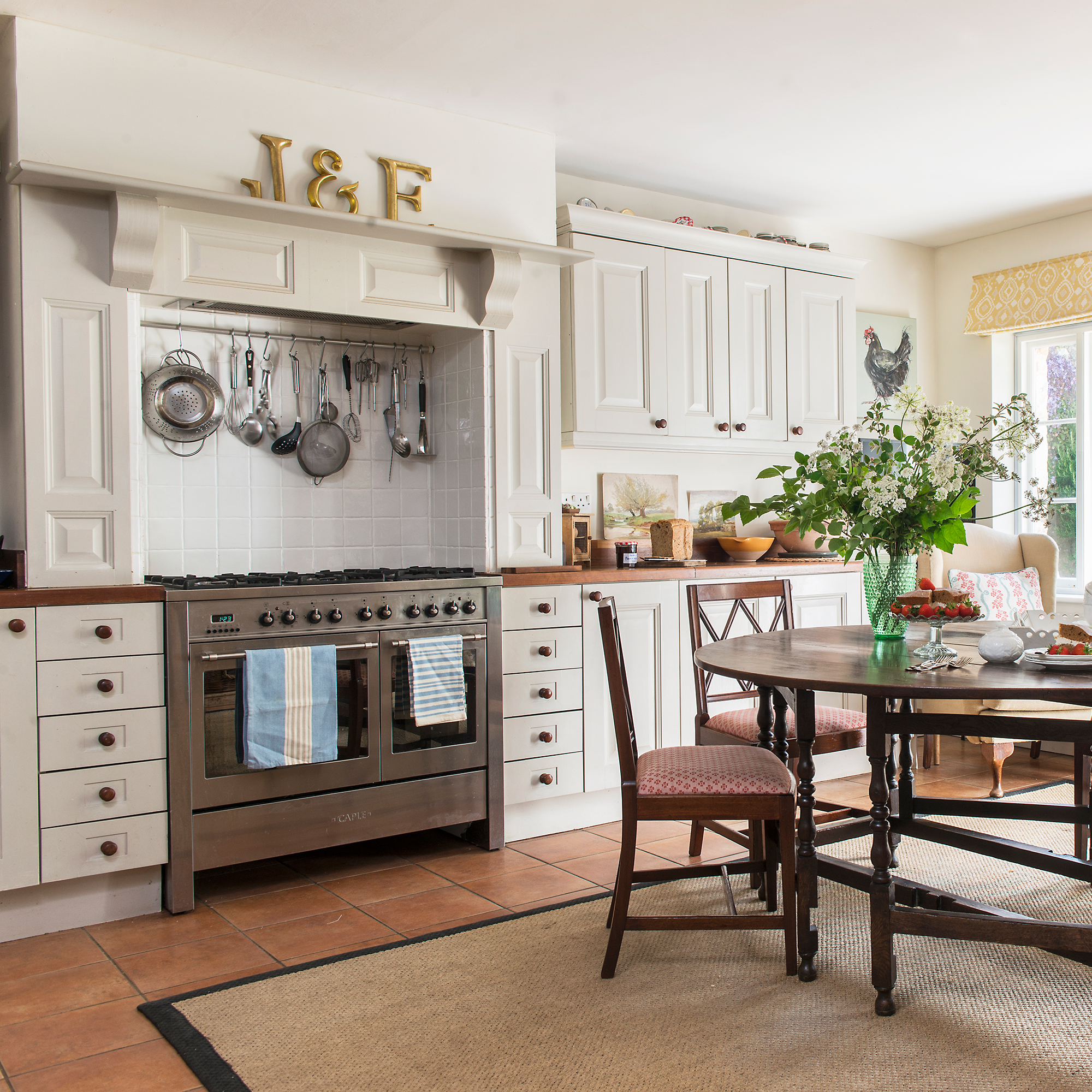
In redesigning the kitchen for the new space, Lizzie again made the most of what was already there as a way to reduce the kitchen extension cost. The wooden cabinets had been installed recently, so rather than replace them, she repositioned them and asked a local joiner to make a matching unit to complete the room.
She also lifted one of the existing floor tiles and found information on the back that helped her track down enough extra reclaimed flooring tiles to fill the extended area.
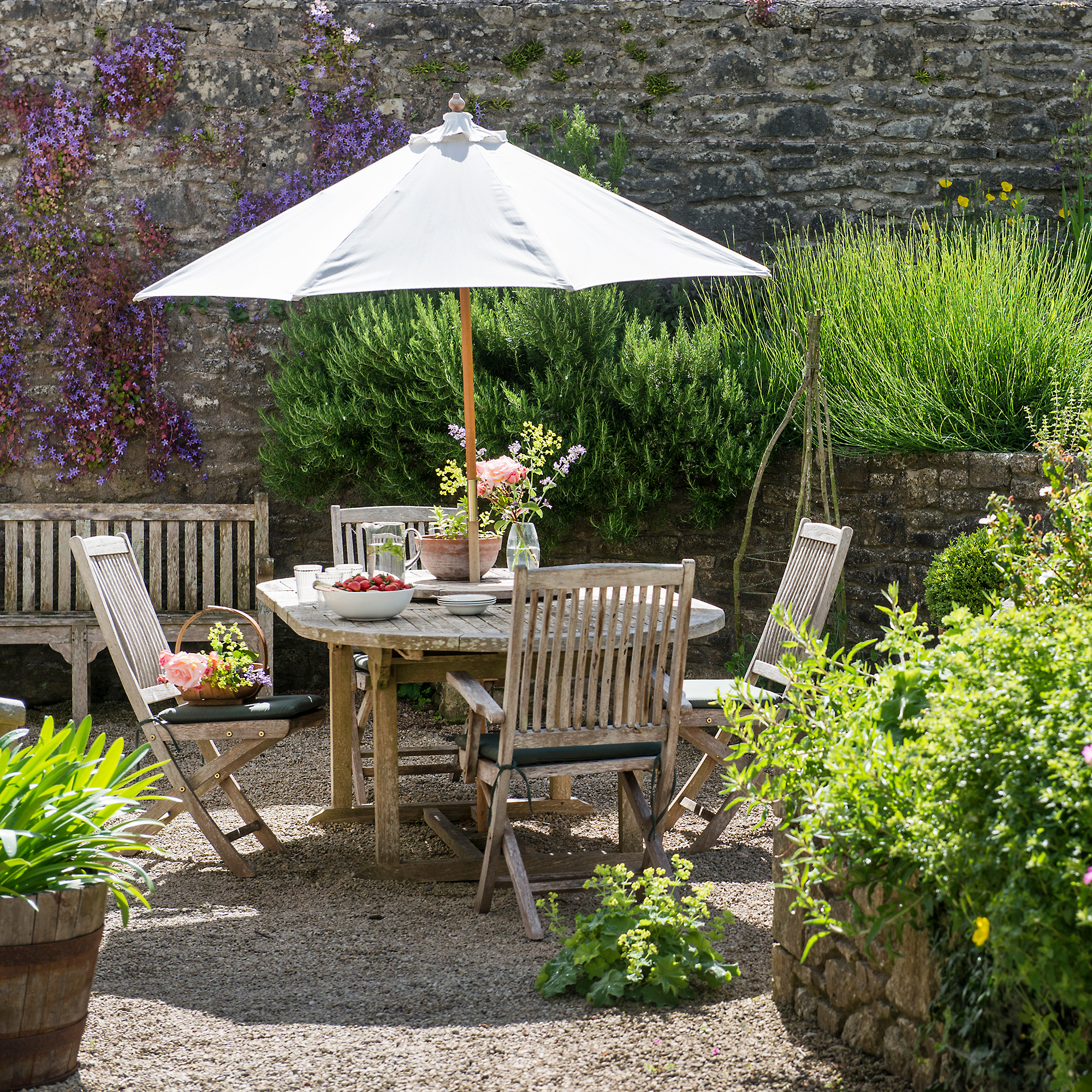
‘Although it’s not large, the extension made such a difference,’ she says. ‘We’ve got a more comfortable entertaining space, French doors onto the garden and a lovely, sunny outdoor dining area. It’s now the heart of the home.’
A home filled with antiques
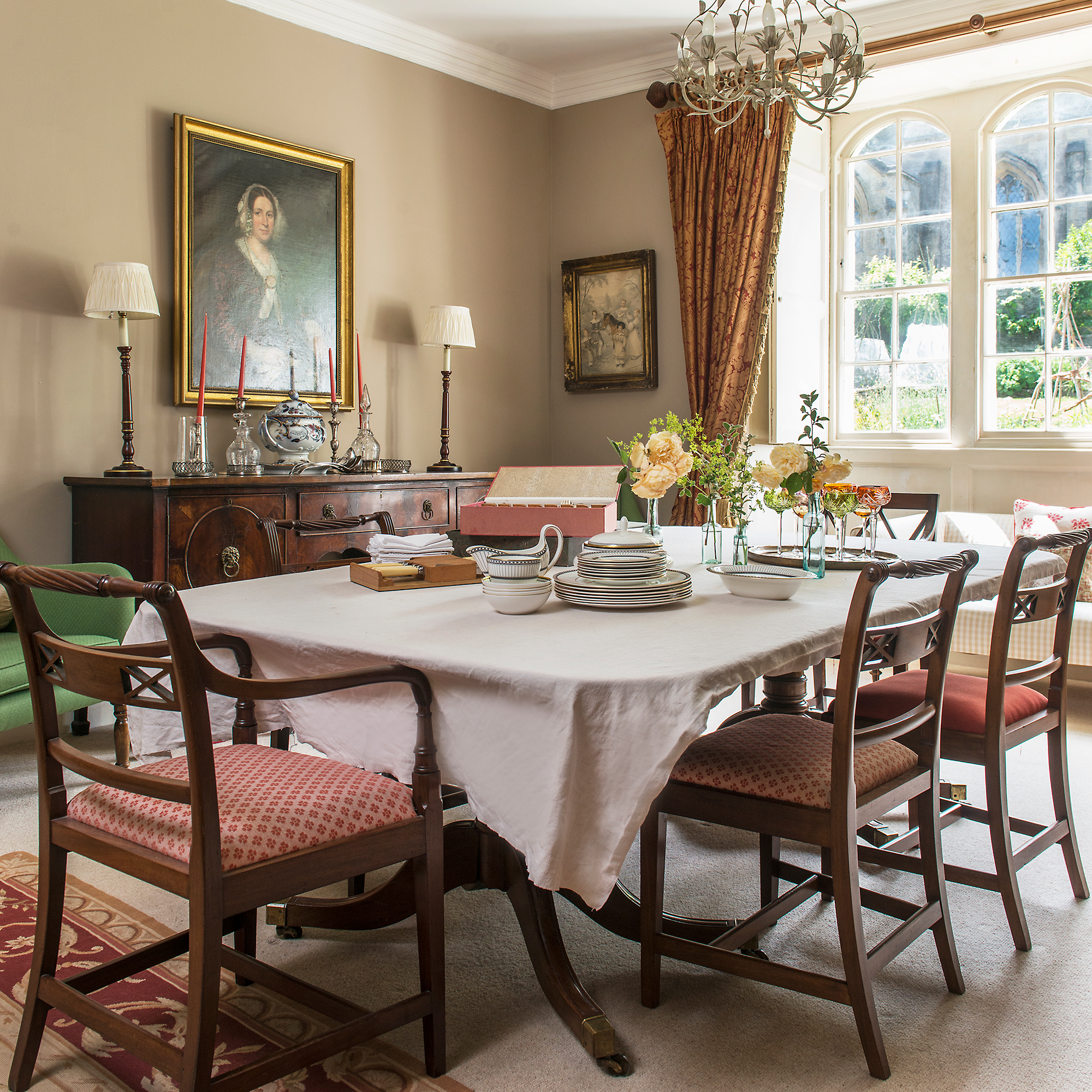
The layout of the rest of the house has remained unchanged, and the elegant rooms, including the neutral dining room, make the perfect settings for the couple’s furniture.
Most items, including the dining room chairs, are inherited antiques. Where they have added pieces, these tend to be vintage finds, such as the dining room sideboard.
‘We’ve both inherited furniture from relatives, and we’re lucky it all fitted in so comfortably,’ explains Lizzie. ‘Each piece holds a story, so it would be very hard to get rid of anything.’
Decorating with colour contrasts
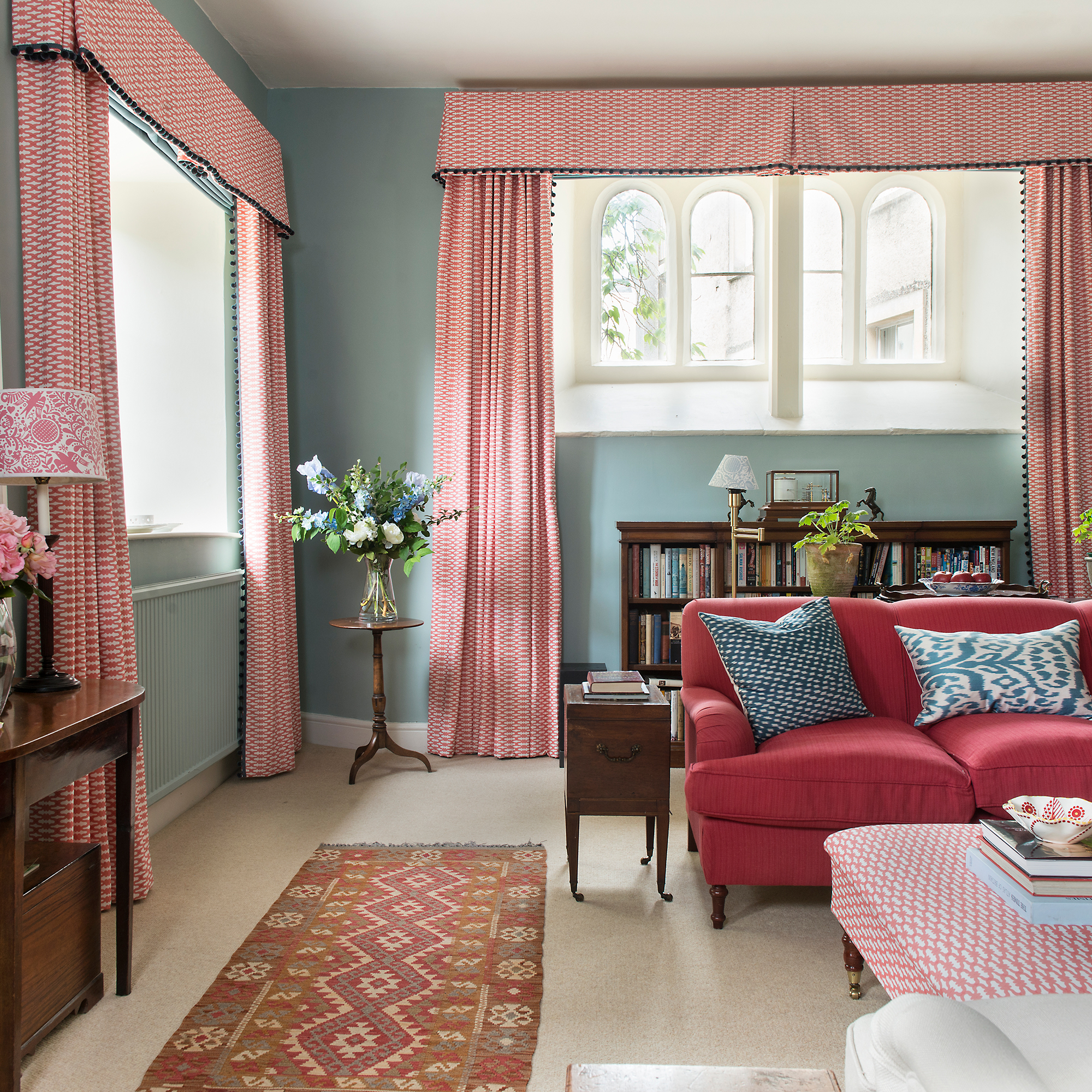
The height and scale of some rooms has been challenging, but Lizzie is artistic and practical and has gradually redecorated every room herself. In updating the interior, she has introduced a fresh feel that enhances the style of the property. ‘I’ve used colour to create a flow from one room to the next and bring the house to life,’ she says.
She designed the colour scheme in the living room around her favourite red sofa, and as a window treatment idea, made curtains with matching pelmets to showcase the unusual shape of the windows.
Walls painted in Sanderson's Blue Clay contrast with curtains and upholstery in Charlotte Gaisford's red Knot Tom Tom fabric – an example of how to use the colour wheel.
Use of pattern in bedrooms
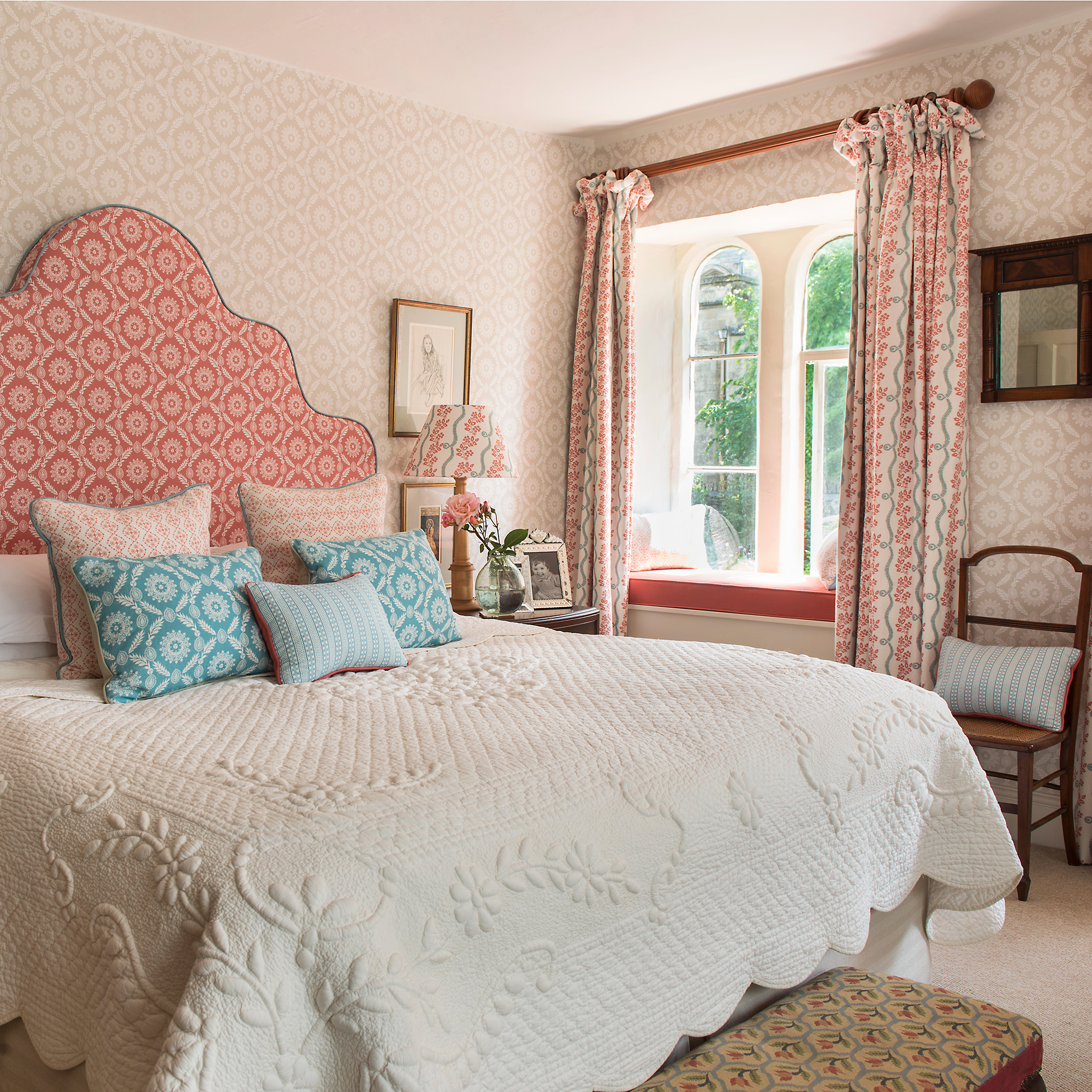
Like a lesson in how to use pattern in interior design, the bedrooms are filled with cleverly combined prints to create blissful spaces.
The main bedroom wallpaper and fabrics from Charlotte Gaisford. ‘The ceiling isn’t level, so I had to make sure that the pattern looks straight to the eye,’ says Lizzie.
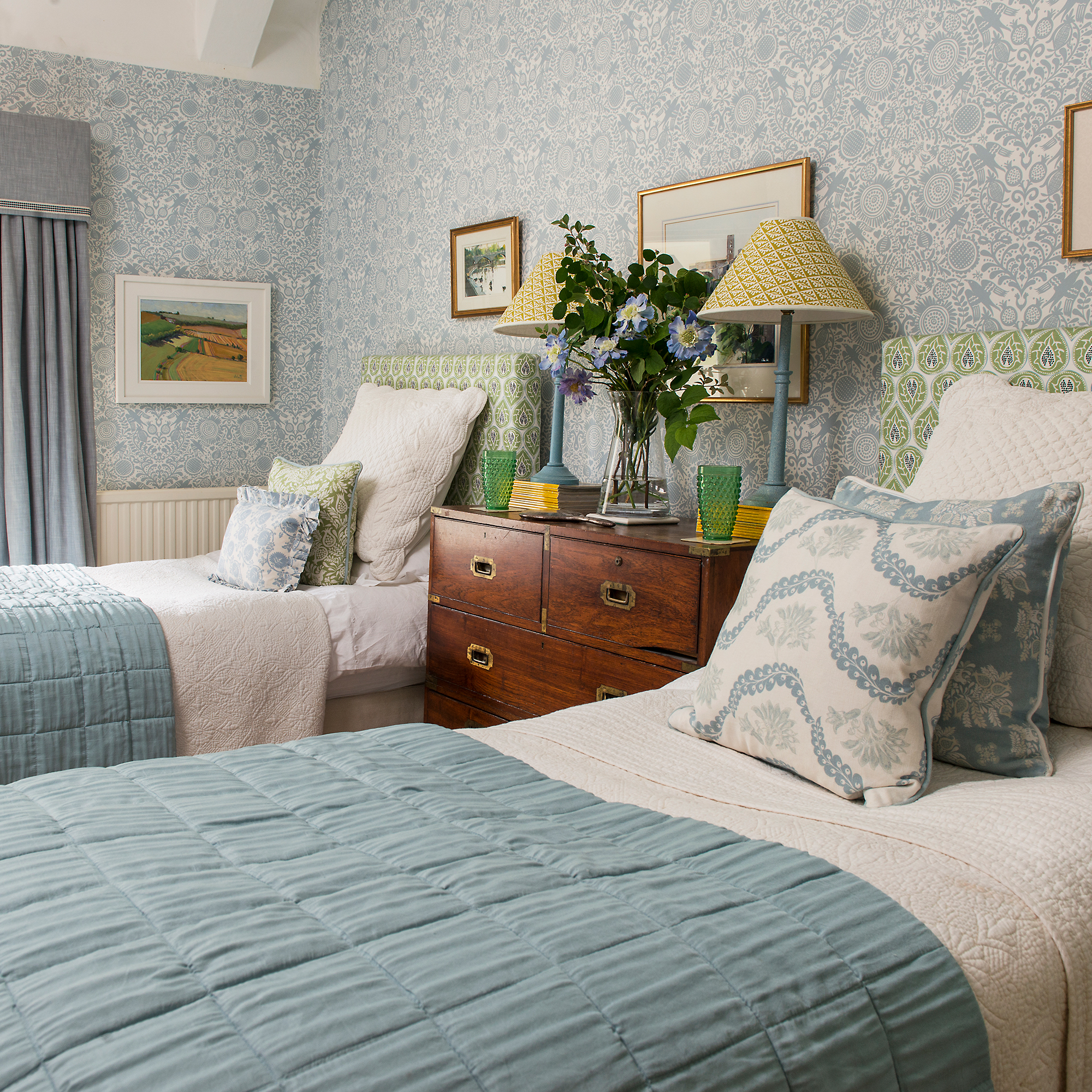
In the twin bedroom, blue curtains, made by Lizzie years ago, inspired a recent update. On the walls is Charlotte Gaisford’s London Birds print with its Bertie fabric on the headboards. Lizzie made new lampshades using Cambridge Imprint’s Oak Leaves paper. She has followed the golden rules for pattern clashing.
Bathroom art
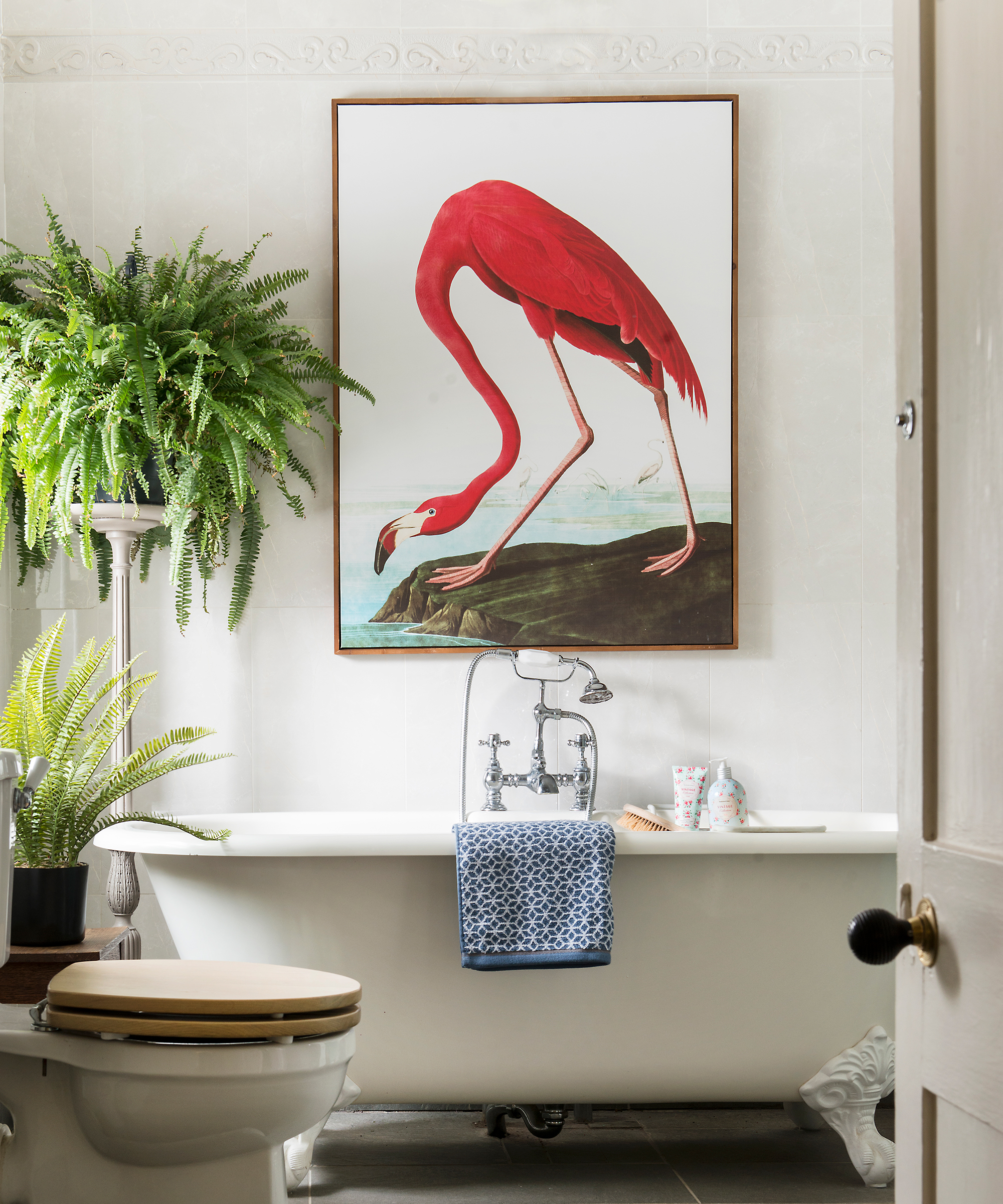
The period-style bathroom, fitted when the family first moved in, has stood the test of time. To give it an eye-catching update Lizzie found a flamingo print as a bathroom wall art idea – a quick and simple way to add interest in a neutral bathroom space.
Leafy ferns further soften the space and make excellent bathroom plants.

When they first arrived – as newcomers to the house and area – Lizzie and James had no idea they would remain so happily settled here.
But from the promising early signs the house has grown and evolved with the family over the years. ‘From the start, we felt like we’d come home,’ says Lizzie, ‘and that has never changed.’







